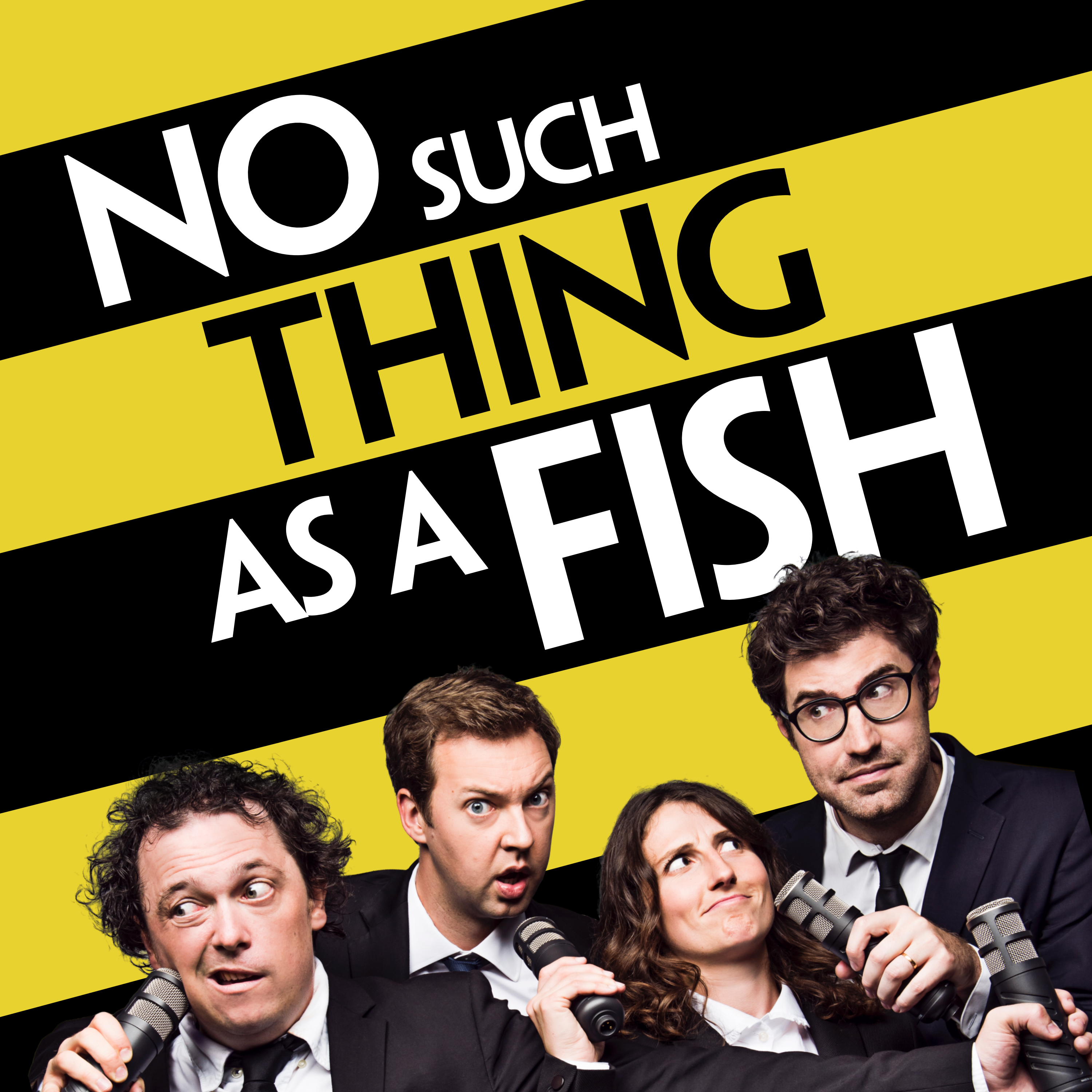
Piano, finally
Piano Finally is a podcast by an old bloke who is learning the piano, finally. I cover the process of learning the piano and music theory as an adult learner. I also review piano books, hardware and other materials from an adult learner's perspective.
Piano, finally
Episode 33 - Playing With Music
Introduction
Welcome to Episode 33 of Piano, Finally, a podcast by David Reidy, an old bloke learning the piano.
Podcast Website Update
The podcast website is undergoing changes. The new site is hosted on Buzzsprout, and while the main address remains www.pianofinally.show, you can also visit the temporary site at www.pianofinally.buzzsprout.com if the transition is still in progress.
Sydney Festival – Sigfried & Roy: The Unauthorised Opera
David attended Sigfried & Roy: The Unauthorised Opera, a production by the Sydney Theatre Company. The opera covers the lives of the famous Las Vegas magic duo. Performances by Christopher Tonkin and Kanen Breen were exceptional, and the puppetry work on the life-sized tiger Manticore was outstanding.
Read more about the show here: Sydney Festival – Sigfried & Roy Opera
Essay – Playing with Music
David discusses the balance of fun and seriousness in learning music. Inspired by a Leonard Bernstein performance of Beethoven’s Symphony No. 7 in A Major on Stage+, he explores ways to inject fun into piano practice.
Check out the full concert: Stage+ Concert
A helpful tip from Jazer Lee’s YouTube channel suggested practising scales with different articulations to keep things interesting.
Review – Scaler 2
David reviews Scaler 2, a music software tool that assists with playing chords and chord progressions, making theory more approachable. The software offers various scales and chord voicings, helping learners explore musical possibilities without requiring advanced skills.
More about Scaler 2: ScalerMusic Website
Scaler 3 is set for release in March, and purchasing Scaler 2 now includes a free upgrade.
Progress Update
David shares updates on his current piano pieces and exercises:
- Bagatelle in F by Daniel Gottlob Türk (ANZCA List B)
- Afternoon Snooze by Andrew Craggs (ANZCA Preparatory List C)
- Czerny Op. 599 Exercise 1
The pieces were recorded using a Kawai NV10 and Pianoteq 8 with the New York Steinway Model D setting.
I hope you enjoy the episode and keep having fun with music!
You can contact me:
- via email at david@pianofinally.show; this is probably the best option
- the show website, www.pianofinally.show
- Instagram and Threads @pianofinally
- and on YouTube
- all the podcast directories - list
- here's the RSS feed
Some of the links to books and other items mentioned in the podcast may affiliate links for Amazon or other providers. If you use one of these links, a commission may be paid to me at no additional cost to you. Thank you if you use a link.
All reviews of products, websites and services are unpaid, and no sponsorship has been received for any content on this podcast.
David Reidy (00:00):
Good day everyone. I'm David Reidy. Welcome to Piano. Finally, a podcast by an old bloke who's getting around to learning the piano. Finally, welcome to show 33. Thank you very much for taking the time to listen. If this is your first time hearing the podcast, I hope you enjoy what's here. If you are a returning listener, then thanks again for coming back. If you're learning the piano or another musical instrument, let me know how you're going with it. You can contact me at David at piano. Finally show a bit of news about the podcast website. It has had a bit of a change over the last week. I use Buzzsprout to host the podcast files and they have recently upgraded the website that comes with their hosting package. I had been using Squarespace and doing everything twice, but I've decided to just move things with a Buzz Sprout site.
(00:59)
This takes a bit of time and may not have been completed by the time this episode comes out. The address of the site will stay the same at www dot piano finally show, but during the changeover, it may go offline or point to the old site for a short while. If piano finely show is not working properly or showing the old content, the news site can be found at www.pianofinely.buzzsprout.com, but that'll only be temporary. The email address won't change, and it is working well. It's working now. It seems that I had some of the settings wrong, and so for the past month, I haven't been getting any emails sent to that address. I am now. As I was changing settings for the website, suddenly a whole pile of emails from December and January arrived in my inbox. So if you've contacted the show recently, I'm very sorry I haven't responded, but I'll get on to getting back to everyone over the next few days.
(02:05)
I got to some more live music during the week. The Sydney Festival runs through most of January, which means there is a large variety of shows of many different genres filling venues around the city. I was able to go to see Siegfried and Roy, the Unauthorised Opera, a production of the Sydney Theatre Company. This is a new Australian opera, which as you can probably guess, is about Siegfried Fish Bucker and Roy Horn. Those are the Las Vegas Magic Act fame. It covers their lives from their childhoods to the events of 2003. The performances were great. The main characters were played by Christopher Tonkin and Canaan Breen, both of whom were renowned opera singers and who were excellent in their roles. The supporting cast was equally good, especially the counter tenor. His performance at the climax of the show was amazing. Also amazing was the work of the puppeteers who brought the full size tiger Manco to life.
(03:04)
Manco had a puppeteer Thomas Ley on the inside and Kirby Myers on the outside, making the incredibly lifelike two metre tall tiger, a real presence. Siegfried and Roy were famous for their magic as well as their big cats, so the opera also included a number of stage magic illusions from young Siegfried producing a stuffed rabbit from a hat to soaring a woman in half. Near the end of the show, all the illusions were performed well by the actors whom I assume are not normally illusionists. It was a really enjoyable evening and compared to normal opera tickets, it was quite reasonably priced. Unfortunately, you've missed a show in Sydney. It closed last night, but if you see a production of it somewhere, it's worth checking it out as this is a new work. I don't know what sort of opportunities there might be to see it in the future.
(04:01)
Playing with music, I know that there are a lot of people who see music as a very serious business. While I've been writing this, the Australian radio station, triple J has been running down their list of the hottest 100 songs of 2024. Undoubtedly, there are many people whose livelihoods depend upon music in all its various forms, and it's just as well that they take it seriously. Luckily, I don't have to, despite the fact that throughout my life I have always ended up teaching the things I have learned. I have no intention at all of teaching music. I can do music just for fun. I will still take the learning seriously, but I'm free to play with what I learn rather than have to apply it to a serious purpose. I've said all along that my goal in learning to play the piano is to get good enough that I can use my skills to entertain and to let people have some fun.
(04:54)
I think that will be fun for me too. While I'm writing this, I have stage plus showing a performance of Beethoven Symphony, number seven n, a major with Leonard Bernstein conducting the VNFL Harmonic. It's one of my favourite Beethoven pieces despite the lack of a piano, but looking at the orchestra members, the only person who looks like he's having any fun is Leonard Bernstein conducting without a score, surely it must be fun being part of a group making all this wonderful music. Practising scales is not the most fun of learning to play the piano, so I've been looking around for ways to play with that process while still improving my playing. One of the YouTube channels, I'll watch, I think it was Jaya Lee suggested playing scales in different ways using dynamics and articulation to have some fun with how it sounds. I've been playing scales exclusively at Gato.
(05:47)
The video suggested playing them staccato and then trying with one hand playing legato and the other staccato. I gave it a go and it's a lot harder than I thought it would be. It'll be fun trying to get it all to work. I've been working through music theory in addition to playing, and although it's a relatively dry topic, I'm finding it really interesting, but I can't say it's fun. The main reason is that if I want to turn the notes written in the text into music, I have to play them on the piano, and my skills aren't there yet to do that without a struggle. Luckily, I found a solution. Later in the episode, I'll review a music application called Scaler two. That makes playing with chords a lot of fun. Scaler two lets you play a chord by pressing one key, which lets me explore all the chord progressions I've been learning about in theory, which I don't yet have the manual dexterity to play on the piano.
(06:44)
Additionally, it can do the voicing so they sound musical. It's great fun and really helps with understanding the reasons behind the theory and because it's fun. I look forward to the last five minutes of each practise session where I move away from the Kauai to the Atia keyboard to play with some chord progressions in scaler. Do you inject fun into your practise and playing? I'm glad that I'm in a position that I don't have to take it all too seriously. Just before I finish, I notice something interesting in the Bernstein performance. It was recorded in Berlin in 1979, and the orchestra is composed entirely of men. There's not a single woman to be seen. Isn't that a bit weird? After all, Mrs. Martin, who lived across the road was the associate principal oboist in the Sydney Symphony Orchestra in the early 1970s, and she was certainly not the only woman on stage. The Vienna Philharmonic apparently didn't catch up until 1997 when Anne Leke a harpist joined. Oh, and incidentally, it was Good luck, babe, by Chapel Rowan that took out the number one spot in the Triple J hottest 100.
(08:00)
I'm not sure how effective Facebook advertising is, but I'm pretty sure that it's not as effective as they like to make out. I don't use social media a lot. The algorithms are pushed content and I do not agree on much, so I pretty much stay away. I have Facebook to keep up with family members and Instagram mostly for this podcast. This means that there is a lot of music content that I post, so the advertising I get served is music related. This week's purchase started with a Facebook music ad for some music software called Clipper Two. I don't take anything I see on Facebook at Face value, so although it looked interesting, I decided to do some more research on the software and that led me to another product called Scaler two. Scaler two is a cord generator, a piece of software that works with a door to generate chords and chord sequences. I've been looking at these from a theory point of view and playing around on the piano to see what they sound like. My main problem with doing that is that even if I stick to see Major as the key, I'm pretty slow at moving from one gour to another unless they're triads in root position, and that's not particularly musical. I can set scaler two to see major triads and it will play each of the seven chords with the press of a single key on the MIDI keyboard.
(09:33)
That's fine, but I can do that myself. However, if I turn on voice grouping, it will still play the chords, but now with inversions so that the movement between chords is minimised. I've been using that to give me hints on how to do it myself. Back on the Kauai, of course, it works with all the scales and lots of different modes, including the church modes, scales from jazz, blues, Persian, and Eastern scales, most of which I've never heard of, which are fun to explore. It's also simple with a lot of research, work and practise. I could do all of this without the software, but with it, I can sit down at the keyboard and explore a much wider range of music than I would be able to otherwise. Chord progressions are another feature of S Scaler. I know the 1 5, 6 4 progression of course, but there are many others. Scaler gives you an easy way to put them in. It goes many steps further by having hundreds of other progressions organised by genre such as musical theatre. Scaler also has chord progressions designed by musicians and included in the software
(11:38)
At the moment. You have to use scaler with the DAW. It sits within it as an instrument, and you can choose to use the inbuilt samples. It includes all the examples. In this section were done with the Felt piano instrument, but you can also use it to control other MIDI instruments. The new version, scaler three, which is due for release in March, will include a standalone mode, so it can be used by itself. Best of all, if you buy Scaler two now you get a free upgrade to Scaler three when it is released. There is a huge collection of tutorials available on YouTube for the software and a full course that is quite cheaply priced that I'm working through at the moment. As soon as you watch one of their tutorial videos, you'll learn. Another reason that I like the product, all the presenters have Australian accents because Scaler is developed by Scaler Music, a company that works out of Melbourne, another reason to support them. Anyway, I'm having great fun with Scaler two, exploring lots of different music and seeing some of the theory I've been learning put into practise. Scaler two with the free upgrade to Scaler Three sells for $49 and is available directly from scaler music for Mac, OS and Windows. There's a David Reidy (12:50):
Non-affiliate link in the show notes. Well, that's it for this week. David Reidy (12:59):
If you'd like to contact me, email is the best way You'll find me at David at piano. Finally, show and the website@www.pianofinely.show or just for this week, piano finally.sprout.com. While things are changing in all cases, piano finally is all one word. The show is also on Facebook and Instagram and available as audio only on YouTube. You can subscribe via any popular iOS or Android podcast application or from directory such as Apple Podcasts, Spotify, or YouTube. I also post an excerpt and a link for each episode as an Instagram reel. If you're learning an instrument, let me know where you are in your journey, what's going well, what are your challenges, and so until the next episode, I hope your piano stays in tune and you enjoy your time at The Keys.
(13:56)
Again, I'm including two pieces and one exercise in this week's progress. The first piece is the Bag of Telling in F by Daniel got Lob Turk. It's a list B piece from the Anker book, and it's coming along nicely. The second piece is Afternoon's News by Andrew Crags from the Anker preparatory list. I've recorded it in two bits. Firstly, bars one to six, which I've been practising a fair bit and the new bit bars seven to 12. I've edited them together, but I thought I should let you know it took me two goes. When it comes to the exercises, I'm still on churn. Exercise number one from Churn's Opus 5 9 9. All the recordings were made using the Kauai NV 10 as the keyboard and piano tech is set to the New York Steinway Model D in close player mode. I'm going to change the piano in piano tech every so often for a bit of variety.
Podcasts we love
Check out these other fine podcasts recommended by us, not an algorithm.

Connected
Relay
Upgrade
Relay
No Such Thing As A Fish
No Such Thing As A Fish
We Can Be Weirdos
Global
Stuff The British Stole
ABC and CBC
The iDeveloper Podcast
Steve Scott (Scotty) & John FoxRaven On: A Pop Culture Podcast
Natalie Bochenski & Stuart Layt
Smart Enough to Know Better
Dan Beeston & Greg Wah
TopMusic Piano Podcast
Tim Topham
The Chopin Podcast
Garrick Ohlsson and Ben Laude



